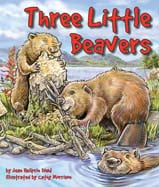Alignment to Standards for KY

| Grade | Number | Standard |
|---|---|---|
| 4 | SC-04-3.4.1a | compare the different structures and functions of plants and animals that contribute to the growth, survival and reproduction of the organisms; |
| 4 | SC-04-3.4.1b | make inferences about the relationship between structure and function in organisms. Each plant or animal has structures that serve different functions in growth, survival and reproduction. For example, humans have distinct body structures for walking |
| 4 | SC-04-4.7.1a | patterns of evidence related to the survival and reproductive success of organisms in particular environments. |
| 4 | SC-04-4.7.1b | Distinct environments support the lives of different types of organisms. |
| 4 | SC-04-4.7.2c | All organisms, including humans, cause changes in the environment where they live. Some of these changes are detrimental to the organism or to other organisms; other changes are beneficial |
| 4 | SC-4-ET-U-1 | ecosystems are defined by the relationships that occur within them. These relationships can be determined through observation of the organisms and their environment. |
| 4 | SC-4-I-S-2 | how changes in the environment affect the plantsê and animalsê ability to survive |
| 4 | SC-4-I-S-5 | consequences of changes caused by humans or other organisms, and propose solutions to real life situations/dilemmas |
| 4 | SC-4-I-U-1 | all living things depend on their environment and other organisms within it for their survival. Certain patterns of behavior or physical features may help an organism survive in some environments yet perish in others. |
| 4 | SC-4-I-U-2 | environmental relationships extend beyond food (e.g. shelter, seed transport). |
| 4 | SC-4-I-U-3 | people impact their environment in both beneficial and harmful ways. Some of these impacts can be predicted, while others cannot. |
| 4 | SC-4-UD-U-5 | Students will understand that some likenesses between parents and offspring are inherited (e.g. eye color) and some likenesses are learned (e.g. speech patterns in people). |
| 5 | SC-05-3.5.1 | cause and effect relationships between enhanced survival/reproductive success and particular biological adaptations (e.g., changes in structures, behaviors, and/or physiology) to generalize about the diversity of species. |
| 5 | SC-05-3.5.2 | all organisms must be able to obtain and use resources, grow, reproduce, and maintain stable internal conditions while living in a constantly changing external environment. |
| 5 | SC-5-BC-S-2 | adaptations of various organisms to their environments through observations as well as print and non-print based resources |
| 5 | SC-5-BC-U-3 | successful organisms must be able to maintain the basic functions of life in response to normal environmental fluctuations (e.g. day/night, seasonal temperature changes, precipitation). |
| 5 | SC-5-I-S-3 | cause/effect relationship of altering a particular population of organisms within an ecosystem |
| 5 | SC-5-I-U-1 | Changes to any population may affect the other populations in that ecosystem. |
| 5 | SC-5-UD-U-1 | animals and plants have a great variety of body plans and internal structures that contribute to their being able to meet their needs. |
| Primary | SC-EP-3.4.3 | Students will describe the basic structures and related functions of plants and animals that contribute to growth, reproduction and survival. |
| Primary | SC-EP-3.4.3a | Each plant or animal has observable structures that serve different functions in growth, survival and reproduction. For example, humans have distinct body structures for walking, holding, seeing and talking. These observable structures should be explored |
| Primary | SC-EP-4.7.1 | cause and effect relationships existing between organisms and their environments. |
| Primary | SC-EP-4.7.1a | Organisms require an environment in which their needs can be met. When the environment changes some plants and animals survive and reproduce and others die or move to new locations. |
| Primary | SC-P-BC-S-4 | occurrences in the environment that illustrate change (e.g., erosion, earthquakes, weather phenomena, human intrusion) |
| Primary | SC-P-I-S-1 | characteristics of an ecosystem |
| Primary | SC-P-I-S-2 | how organisms depend on their environments |
| Primary | SC-P-I-S-3 | the environment can be affected by the organisms living there |
| Primary | SC-P-I-S-4 | changes in an environment might affect plantsê and animalsê ability to survive |
| Primary | SC-P-I-U-1 | the world has many different environments. Distinct environments support the lives of different types of organisms. |
| Primary | SC-P-UD-S-2 | identify the characteristics that define a habitat |
| Primary | SC-P-UD-S-3 | Students will investigate adaptations that enable animals and plants to grow, reproduce and survive (e.g., movements, body coverings, method of reproduction) |
| Primary | SC-P-UD-S-4 | Students will analyze structures of plants and animals to make inferences about the types of environments for which they are suited |
| Primary | SC-P-UD-U-2 | plants and animals have features that help them live in different environments. |
| Primary | SC-P-UD-U-3 | some animals are alike in the way they look and in the things they do, and others are very different from one another. |
| Primary | SC-P-UD-U-4 | the offspring all living things are very much like their parents, but not exactly alike. |
| Primary | SS-EP-4.2.1 | places on Earthês surface by their physical characteristics (e.g., climate, landforms, bodies of water). |
| Primary | SS-EP-4.4.1 | ways people adapt to/modify the physical environment to meet their basic needs (food, shelter, clothing). |
| Primary | SS-P-G-S-3 | ways people and animals modify the physical environment to meet their basic needs (e.g., clearing land to build homes versus building nests and burrows as shelters) |
| Primary | SS-P-G-U-3 | Students will understand that people depend on, adapt to, and/or modify the environment to meet basic needs. Human actions modify the physical environment and in turn, the physical environment limits and/or promotes human activities. |